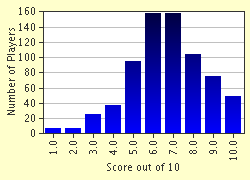Quiz Answer Key and Fun Facts
1. What type of aircraft was the Badger?
2. Who coined the phrase "The Iron Curtain"?
3. During the '50s and '60s a chain of radar stations was built throughout Alaska, Canada, Greenland and Iceland to give early warning of a Soviet air or missile attack. How were these radar stations collectively known?
4. In 1948-49, the city of Berlin was blockaded by Soviet forces. How were the French, US and British sectors of the city supplied?
5. For much of the Cold War, the British nuclear deterrent force comprised of a land-based bomber fleet. These bombers were collectively known as the V-Force. The three types of bomber used were the Avro Vulcan, the Handley-Page Victor and a third type. Which was it?
6. For much of the Cold War, The US Strategic Air Command's mainstay was the mighty Boeing B-52. How was this aircraft also known?
7. In late 1962, American U2 spy aircraft found that Soviet medium-range nuclear missile installations were being built in the US' "back yard". Where were they?
8. In 1969, President Richard M. Nixon initiated a series of summit-level talks with the Eastern Bloc in an attempt slow down the ruinously expensive and dangerous nuclear arms race. How were these talks known?
9. In 1962, the British Prime Minister, Harold MacMillan, and the US President, John F. Kennedy, agreed that Britain should adopt a US nuclear delivery system, which would ultimately replace the V-Bomber force in the nuclear role. What was its name?
10. In the late '80s a new Soviet leader embarked on a series of reforms (of which "perestroika" (restructuring) and "glasnost" (openness) were but two), which ultimately saw the dissolution of the USSR and an effective ending of the Cold War. He was awarded the Nobel Peace Prize. Who was he?
Source: Author
frankmcvey
This quiz was reviewed by FunTrivia editor
bloomsby before going online.
Any errors found in FunTrivia content are routinely corrected through our feedback system.

